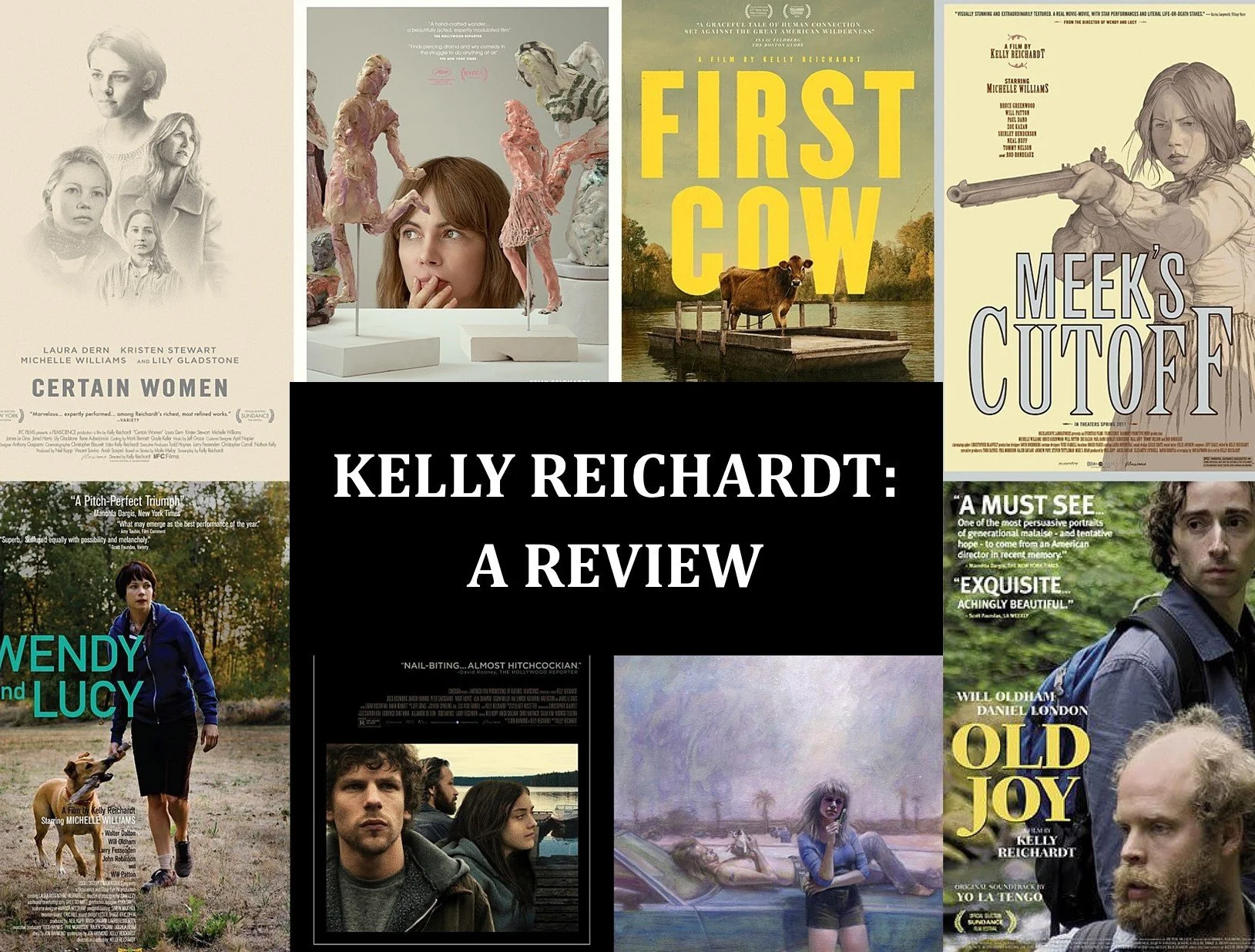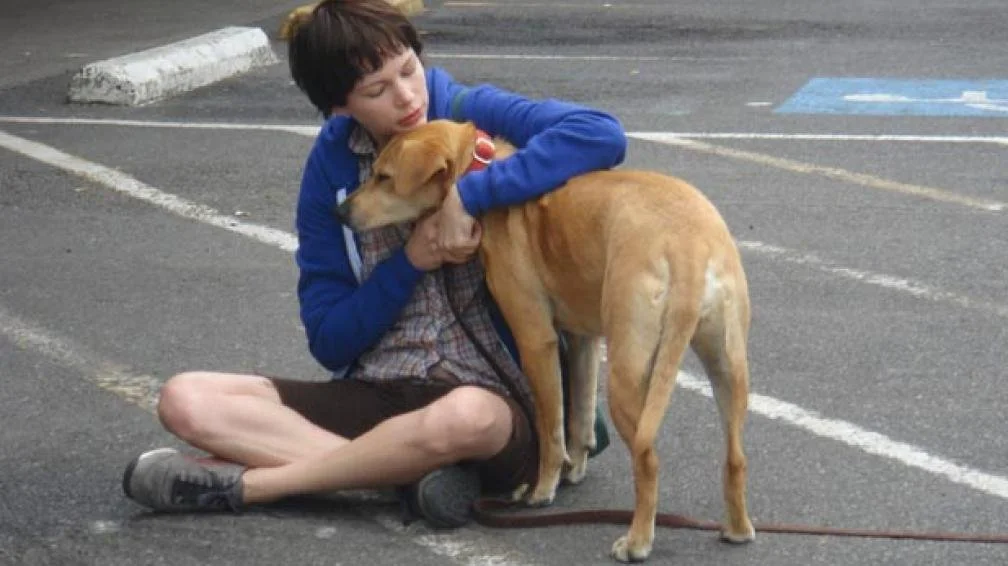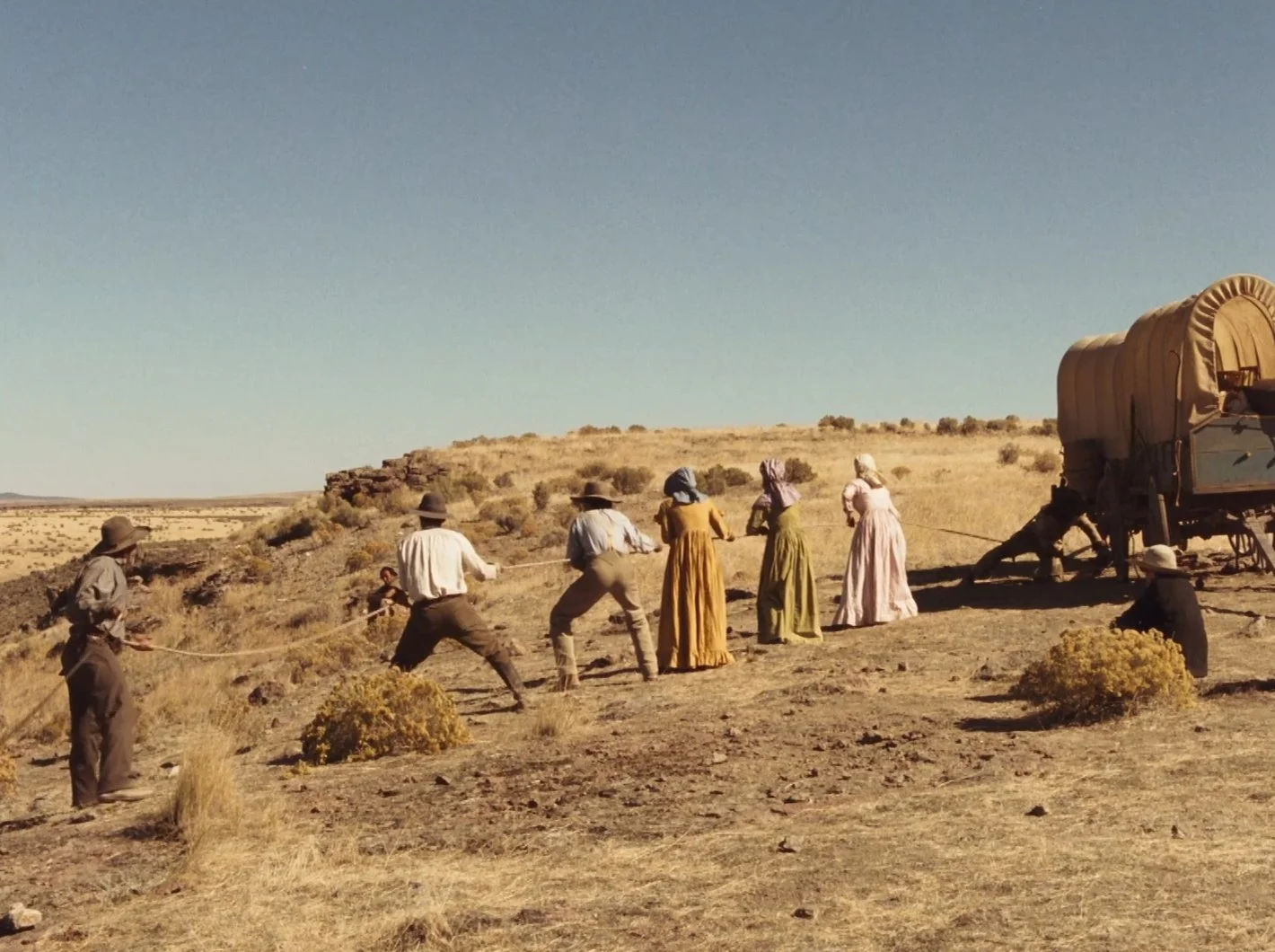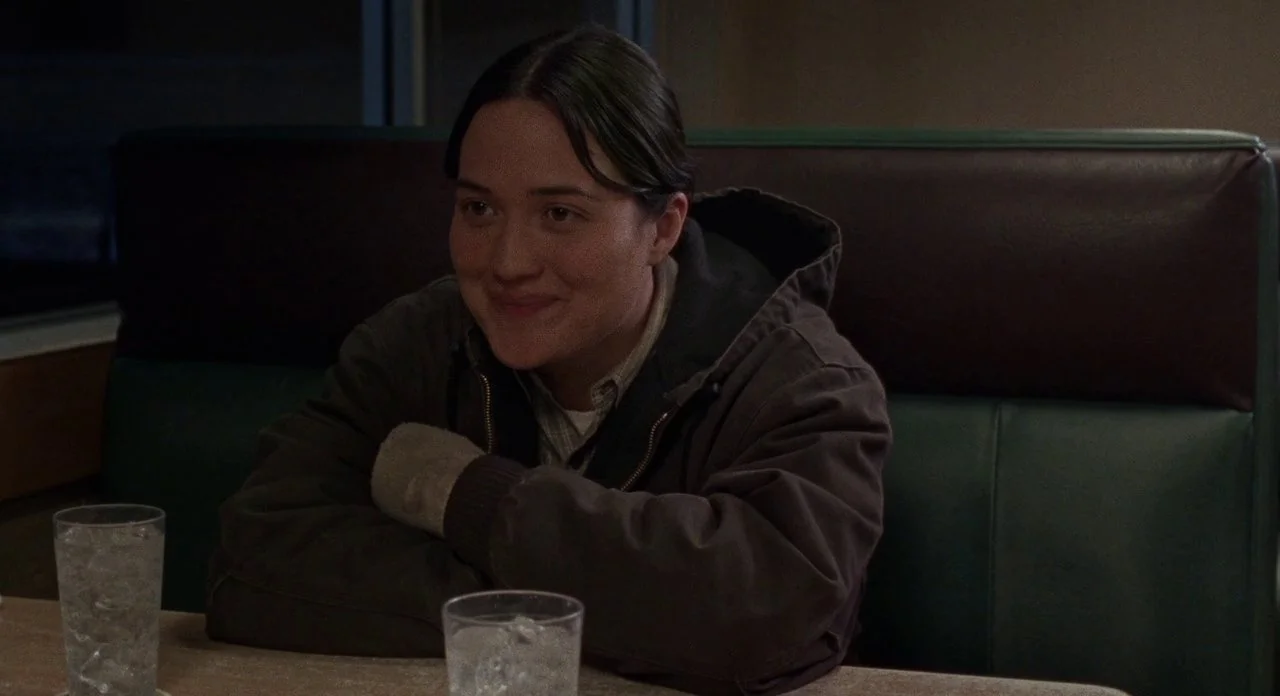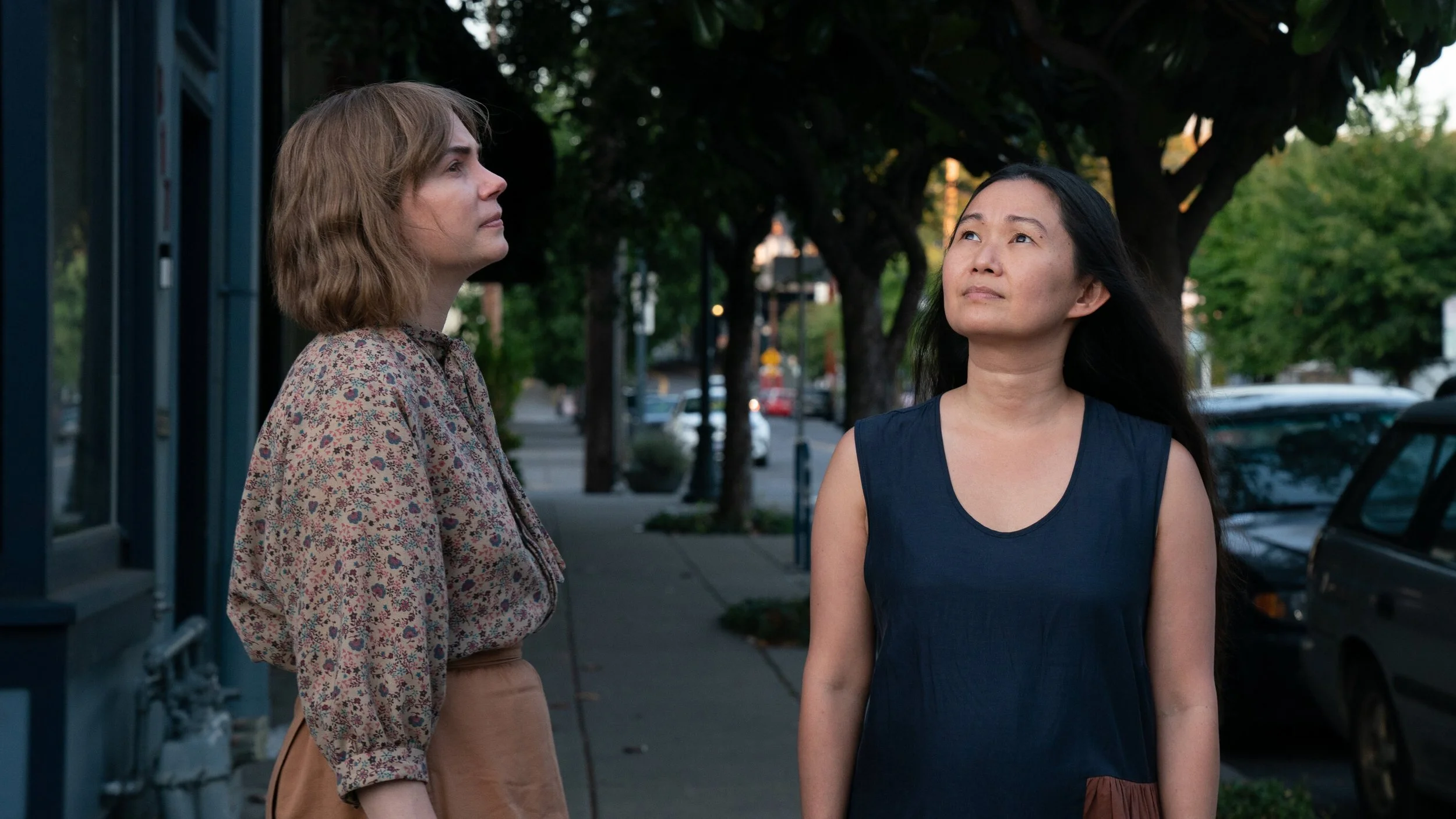Kelly Reichardt: A Review
Director Kelly Reichardt has been on my radar for over 10 years now. Ever since the long-running podcast Filmspotting (possibly the longest running movie podcast) talked heavily about her film Meek’s Cutoff in 2011, I’ve been keeping an eye on her. Even as I write this I’m questioning whether or not it was Meek’s Cutoff or 2008’s Wendy and Lucy that was the first I heard. Either way, in 2017, I named Reichardt the second-most important female director you should know. Well, assuming you missed that article and opportunity to familiarize yourself with her and since she released another film this year, I thought it was a good time to put the spotlight back on her.
I can’t help but compare Reichardt to another director I recently spotlighted: Lynn Shelton (I even compare the two at one point below). Both are names most people are, sadly, unfamiliar with. Both are indie directors that actors line up to work with. And both often film(ed) in the Pacific Northwest. And both make movies that hover at or below $2 million to make and usually earn less than that. They are not dissimilar on the face of it. But their films are quite different. Reichardt is a filmmaker whose style is descendant of Yashujiro Ozu or Ingmar Bergman, films that are slow in pace and may not have a plot that rises and falls or even offers satisfying conclusions. Some require dissection and careful consideration in order to understand “the point” or certain scenes and endings. But often her films are among the best of their respective years.
Let’s get into it and take a closer look…
River of Grass (1994)
Kelly’s directorial feature debut came about in the mid-’90s. It was a heyday of independent cinema thanks to Steven Soderbergh, Kevin Smith, Robert Rodriguez, and Quentin Tarantino. Kelly’s film was about a man and a woman on the run from the law. However, by this point there were a rash of movies about couples on the run from the law: True Romance, The Chase, Natural Born Killers, and Wild at Heart to name a few. River of Grass is that premise done without a budget.
What makes it stand slightly apart aside from its low-budget and meditative pace is that Reichardt presents her characters as people on the fringe of Florida society who are stuck and want a better life, even if they don’t exactly know what that looks like. Lisa Donaldson plays Cozy, a young housewife who is so bored of her life she wishes someone would steal her young kids. That is a new perspective. The perspective that motherhood is miserable for some women isn’t something I can recall seeing depicted again until Tully (2019).
But, overall, I couldn’t shake the feeling that Reichardt would make better films eventually. So, River of Grass remains a curiosity for those interested in diving into the director’s beginnings.
Old Joy (2006)
After River of Grass and despite its critical attention, Reichardt couldn’t get funding for another feature. She’s quoted as blaming sexism, which isn’t terribly surprising; more female directors were breaking out in the ‘90s, but studios were still very limited in their support of women behind the camera. It wasn’t until friend and successful director Todd Haynes (Velvet Goldmine, Far From Heaven) lent his support that Reichardt was able to make another feature film. It took 10 years.
Her second film, an adaptation of a story by Johnathan Raymond co-written by the two, is about two friends reuniting and going off on a camping trip together. Now, by this time a lot of indie directors like the Duplass Brothers and Joe Swanberg had debuted a new wave of naturalistic indie films. Reichardt’s Old Joy fit snugly with them. It’s also a film about two guys who are in very different directions in their lives reuniting and participating in an activity together. If that premise sounds familiar it should, because Lynn Shelton would make a film about the same idea with Humpday only three years later (her debut, We Go Way Back, would also hit festivals in 2006). Old Joy is a very subtle version of this idea. So subtle that it’s lacking a lot that Shelton would better convey in Humpday.
That said, Reichardt said one of the things she wanted to explore is the idea of individuality in America at that time. It’s definitely something that the film touches on, but most of it requires such extreme attention and analysis to catch that there is almost no impact as a result.
Ultimately, Old Joy is a step up for Reichardt, but is also too subtle for its own good.
Wendy and Lucy (2008)
For her next feature, Reichardt continued working with Jonathan Raymond - and would continue to do so for every film except Certain Women. Wendy and Lucy is again based on one of Raymond’s stories and it tells the tale of a young woman on her way to Alaska to find work only to run into one problem after another somewhere in Oregon. Another collaborator on this project who would work with Reichardt for 3 other films is the star, Michelle Williams. Also, Reichardt’s dog Lucy, who had a significant role in Old Joy, stars as one of the titular characters.
This film is a step up from Reichardt’s previous work for several reasons. Having Williams as your star never hurts, as she shows here how strong a performer she already was at that time. The stakes in the film are very small, but greatly consequential in Wendy’s situation: can she afford a few groceries? If she tries shoplifting, will she get caught? What happens if she has car troubles? Since she doesn’t have a cell phone, can she afford to make phone calls?
This is the microcosm Reichardt is working within. At the time she was trying to express the struggles of those affected by the New Orleans flood, but the film released at the end of 2008, 3 months after the housing market crash that would have ripple effects worldwide and result in a Recession. So, for viewers at the time the film played heavily as a reflection of what Americans were struggling with in that moment. And, taken as such, it works very well.
Even without that context, Wendy and Lucy is a great bit of indie drama.
Meek’s Cutoff (2011)
Reichardt steps a bit out of her comfort zone here with a western about an incident on the Oregon Trail in 1845 where a guide led a group off the path in hopes of getting to the Willamette Valley sooner. Making a film set in the 19th century required period clothing, props, and covered wagons - quite a different demand from what Reichardt is used to. But Reichardt’s sensibilities create something we’ve never seen before in the western genre and a film I named one of the best of its year.
What’s great about Reichardt filming a western is she already is inclined to make films that take their time and drink in their environments. So, in Meek’s Cutoff, Reichardt’s pace is in perfect harmony with life in the Old West. It requires the viewer to slow down and exist in a period that is much slower than modern day. This is a period where it takes up to a minute to reload a firearm. Where a dozen people have to work together to get one covered wagon slowly down a hill.
As in Wendy and Lucy, the tension exists in the small scale like the tension of the wagon going down a hill or if the group’s guide knows as much about the area and its inhabitants as he’s letting on, or if they’re purposely being led astray. Will they even find water again for themselves and their animals? It’s also a subtly feminist western. The women stand by the wagons while the men look ahead and huddle together and decide what to do. Michelle Williams leads the performances by women as a wife who quietly fumes over their situation and the man responsible.
It’s a fantastic film full of small details and anchored by incredible performances by Williams, Will Patton (both of Wendy and Lucy), and Bruce Greenwood.
Night Moves (2013)
Reichardt goes back to a contemporary story for her fourth partnership with screenwriter Jonathan Raymond. It’s a story about environmental terrorists plotting to blow up a dam. While Meek’s Cutoff offered Reichardt’s largest cast to that point, Night Moves shrinks the scale back down to three principle cast members - Jesse Eisenberg, Dakota Fanning, and Peter Sarsgaard - and a handful of minor roles played by Alia Shawkat, Katherine Waterston, James Le Gros, and Griffin Newman.
Reichardt successfully ratchets up the tension in scenes where the trio are preparing their plan without being noticed or while trying to be forgettable. And when they enact their plan there’s moments of tension as to whether they’ll get caught. But the last act is about the aftermath of their actions and if their stand in support of nature is worth the cost of even a single human life. It suggests that the preservation of the environment might not be, but their own preservation is. It’s just not compelling enough to justify stretching the film by another half hour. It’s a complicated third act that leads to neither a satisfying conclusion or an intriguing open end.
But here again, we have a female character (Fanning) who is subject to a frustrating world and led by men who aren’t as competent as they lead on or whose convictions towards the cause are dubious. It continues a through-line in most of Reichardt’s films.
Ultimately, Night Moves, while effective with its tension, is lead astray by its third act and fails to be on par with her past couple of films.
Certain Women (2016)
Reichardt goes it alone adapting works by Maile Meloy and moves the action from Oregon to Montana. Certain Women is an anthology film that paints a tapestry of everyday women in the Livingston area of Montana. The film is broken up into three separate stories that lightly brush against each other, but the film transitions abruptly from one story to another.
The stories are the following:
Laura Dern plays a lawyer with a client who is unraveling and borderline inappropriate due to issues with his case. She finds herself in more and more unpleasant situations with her client when he decides to hold someone hostage.
Michelle Williams is a wife, mother, and business owner whose the target of a lot of resentment in her family. She wants to build a summer home in Montana using local materials, including the remains of a sandstone school from the early days of the town. But whenever she speaks to the owner of the sandstone pieces (Rene Auberjonois) she’s casually ignored and talked over.
Lily Gladstone plays a rancher who spends all of her days working with horses in the small town of Belfry. One night she sees some people filing into a school and joins what ends up being a night class for educators on school law taught by a young and inexperienced lawyer (Kristen Stewart) from out of town. The two meet up after each class at a diner before the latter has to hit the road on the 4-hour commute back to Livingston. The rancher immediately develops a crush on the lawyer.
Aside from the abrupt shifts to the different stories, Certain Women is a film that requires a lot of attention and thought. None of what the film aims to accomplish is obvious, which makes it inaccessible for some. It is a film stuffed with subtle moments full of meaning. But the stories are about women who are worn down by life. Gladstone’s rancher is the sole exception, as she takes her gut-wrenching hit in the film’s climax and moves on with her life. Without giving details, the film ends with an epilogue that returns to each character. We observe each character providing or giving to others despite their experiences, as though this is what is expected of women.
It’s a strong film that invites much discussion and examination.
First Cow (2020)
What might be Reichardt’s best and most conventional film suffered from poor timing as it was released the week the COVID-19 pandemic was escalating. Most of those who did catch wind of it had to check it out on VOD a few months later. It’s another Old West tale, taking place in 1820 somewhere in the Oregon Territory, most likely in what is now known as the Puget Sound. A cook (John Magaro) and a Chinese immigrant (Orion Lee) form a friendship and partnership with plans to move to San Francisco and start a business. Their venture: a heist to steal milk from the first cow brought to the area by the fort’s wealthiest trader (Toby Jones).
This story based on part of a novel by Jonathan Raymond takes its time like all of Reichardt’s films, but it’s about a friendship between two men and it’s something we rarely see depicted in film in this way. It’s also a naturalistic, grounded depiction of the time and region that makes McCabe & Mrs. Miller look like popcorn thrills and that’s refreshing and interesting. Magaro’s Cookie is sweet and soft-hearted. The manner in which he speaks to the cow he’s milking is kind and full of gratitude. Lee’s King Liu is a talented business man who knows how to use his ethnicity to his advantage when necessary, but also when to take advantage of an opportunity while it lasts.
First Cow is a beautiful film with a couple of Reichardt’s best characters and shot and crafted with a skill and care that we rarely see.
Showing Up (2023)
This is Reichardt’s fourth film with Michelle Williams and her sixth film collaborating with writer Jon Raymond. Now, originally, the film was going to be Reichardt’s first biopic and about a Canadian painter named Emily Carr, who spent 10 years as a landlord with the hope of it allowing her to have more time to create art. Once Reichardt arrived in Canada for location scouting and was told the story of Carr was well-known Reichardt immediately decided to shift gears on the project. What resulted has shades of Carr’s story, but is quite different: set in modern times the story follows a sculptor (Williams) who is juggling helping her landlady and fellow artist (Hong Chau) care for an injured pigeon, her job at the Oregon College for Art and Craft, and family matters while preparing for an upcoming show.
Williams and Chau’s performances offer contrasting personalities: Williams’ Lizzy is emotionally restrained, uptight, and reluctant to stand up for herself while Chau’s Jo is very positive, outgoing, and often smiling, but also lackadaisical about her priorities. Lizzy is very meticulous and sincere about her work, but not great with people or relationships. Meanwhile, Lizzy’s family includes a friendly father (Judd Hirsch) who allows a couple of hippies (Matt Malloy and Amanda Plummer) to freeload off of him, a brother (John Magaro of First Cow) that self-isolates and is mentally unstable, and a mother (Maryann Plunkett) who also works at the college and treats her son’s problems casually.
Reichardt likes to let the camera live in its environments in her films. In Showing Up there are many shots of artists working on their various works throughout the college. You see passion and meticulous attention given to these works that may or may not add up to anything in the world. Through Lizzy and Jo (as well as Lizzy’s family) we sense the film is trying to convey how artists struggle to give their lives and relationships the same amount of care they give their art. For some it just might not be as intriguing as the ideas in some of her other films and worth the patience required.
The Ranking
First Cow
Meek’s Cutoff
Wendy and Lucy
Certain Women
Showing Up
Night Moves
Old Joy
River of Grass
Reichardt’s work is not for everyone or every sensibility. She’s firmly a part of the corner of cinema that requires patience, analysis, and deliberation. Her work is far from conventional or the popcorn escapism most people expect from the movies. But she is a craftsman. And a few of her films are among the best of the century. One just has to be willing to come to them with an open mind and an interest in chewing on the characters and stories Reichardt tells. Those that are will be rewarded by something unique and is certain to stick with them long after the credits roll.
What do you think? Have you seen any of Reichardt’s films? If so, do you agree with my reviews and rankings? Comment below.

